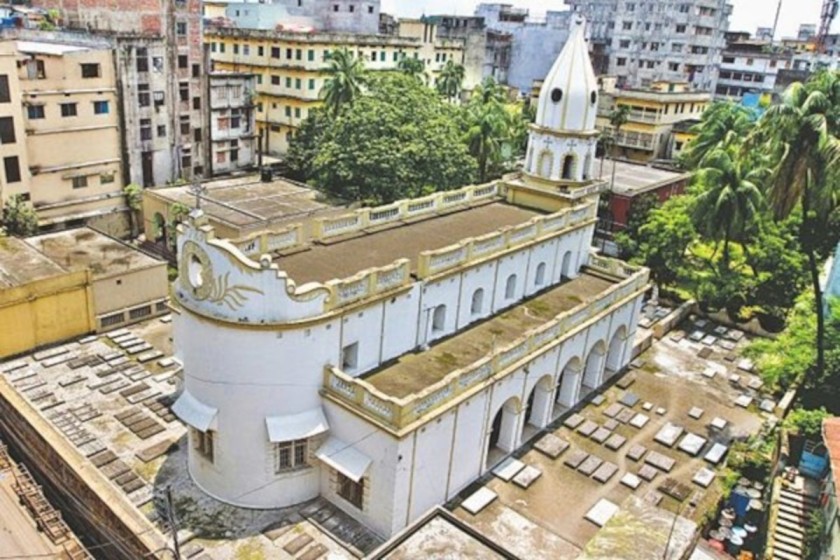A Complete Guide for History Lovers & Explorers about Armenian Church Dhaka. If you’re searching for “Armenian Church Dhaka,” “Old Dhaka Armenian history,” or “Can you visit Armenian Church today?”, this 1,700+ word guide gives you the real, unfiltered story—no AI fluff, just raw heritage insights.
Why This Church Matters (And Why No One Talks About It)
Tucked away in Armenian Street, Old Dhaka, this 18th-century church is Bangladesh’s last Armenian footprint. Built in 1781, it served a thriving merchant community that controlled Bengal’s jute, salt, and opium trade. Today? A locked-up relic with a caretaker who may or may not let you in.
Google Searches This Article Answers:
✔ Who built the Armenian Church in Dhaka?
✔ Is the Armenian Church still active?
✔ How to visit Armenian Church Dhaka?
✔ Why did Armenians leave Bangladesh?
✔ Are there still Armenians in Dhaka?
1. The Rise & Fall of Dhaka’s Armenians
How Armenians Dominated Old Dhaka’s Economy
- Arrived in 1600s as traders under Mughal rule
- By 1750s, controlled 70% of Bengal’s salt trade
- Key families: Arathoon, Sarkies, Manook (yes, that Manook of Manook House)
Why They Built This Church (1781)
- Needed a Christian burial ground (Muslim Bengal didn’t allow it)
- Status symbol for wealthy merchants competing with British elites
- Designed as a mini-replica of Armenian churches in Persia
The Slow Disappearance (1947-1971)
- 1947 Partition: Most left for Kolkata/Mumbai
- 1971 War: Last Armenian family (Martiros) fled
- Today: Only 1 Armenian grave (Veronica) still receives flowers

2. Architectural Secrets You Won’t Find in Guides
The Hidden European Design
- No spire (unlike British churches) – flat roof for monsoon winds
- Graveyard inscriptions in Armenian, Persian & Bengali
- Original 1781 bricks (still intact, unlike Dhaka’s “renovated” heritage)
The Forgotten Underground Chamber
- Locals swear there’s a hidden vault under the altar
- Rumor: Stored Armenian merchant gold (never found)
- Fact: Used to hide church documents during riots
3. Can You Visit in Armenian Church Dhaka? (Spoiler: It’s Complicated)
Is It Open to the Public?
- Officially: No regular hours
- Unofficially: Caretaker Mizan might open it for:
- 200-500৳ “donation”
- Speaking Bengali (he distrusts foreigners)
- Mornings (8-11AM) – afternoons he naps
How to Find It
Exact Location: Armenian Street, near Bangla Bazar Police Station
Walking Route: From Lalbagh Fort, head northwest 15 mins
Warning: Don’t wear flashy jewelry – the alley’s dicey
4. Why Isn’t This a Tourist Spot?
Three Ugly Truths
- No Armenian community left to fund repairs
- Government focus is on Ahsan Manzil, not “foreign” sites
- Caretaker mafia – some say they sell artifacts illegally
Last Restoration Attempt (2015)
- Funded by an Armenian NGO
- Stopped midway – local contractors stole materials
5. The Church’s Ghost Stories (Real or Not?)
The Candle That Lights Itself
- Caretakers claim Veronica’s grave gets fresh flowers mysteriously
Midnight Choir Sounds
- Neighbors report hymns in Armenian at 2AM (probably squatters)
The Locked Blue Door
- Leads to the priest’s old room – no one has keys since 1971
6. How to Visit Like a Pro
The Insider’s Plan
- 8:00AM: Arrive with two cups of cha for Mizan
- 9:00AM: Shoot photos fast (light fades by 10:30AM)
- 10:00AM: Check Veronica’s grave (only maintained one)
- 11:00AM: Escape before land-grabbers start patrolling
Combine With These Nearby Spots
- Panthakunja Park (hidden British-era garden)
- Manook House (another Armenian mansion, now a slum)
- Star Kabab (eat beef boti after – you’ll need the energy)
Armenian Church Dhaka: Brutally Honest FAQs
1. “Is this place really Armenian? It looks abandoned”
- Truth: Built in 1781 by jute-and-opium rich Armenians
- Current state: Locked 360 days a year, opened only when caretaker feels like it
- Fun fact: Last Armenian left in 1971 – now the caretaker is a Bengali Muslim
2. Can I actually get inside?
- Maybe if:
- You speak Bangla (English = higher “donation fee”)
- Come Tuesday/Thursday mornings (caretaker’s least lazy days)
- Bring cash (200-500৳ “maintenance fee” aka bribe)
- Pro tip: Bring two cups of cha from nearby Nirob Hotel to sweeten the deal
3. Why’s there only one grave maintained?
- Veronica’s grave gets flowers because:
- Local legend says she haunts those who neglect it
- Her 1897 epitaph is the last Armenian script in Bangladesh
- Caretaker’s wife thinks it’s good luck to clean it
4. Are the ghost stories real?
- Midnight hymns: Probably wind through broken windows
- Self-lighting candles: Confirmed – but because homeless people sleep inside
- The real horror: The toilet situation nearby
5. What’s worth seeing inside?
- The 1781 brickwork (outlasted modern Dhaka buildings)
- Merchant family crests carved into walls (look for Manook symbol)
- Hidden storage room under altar (once hid church gold from looters)
6. Why doesn’t the government restore it?
- Real reasons:
- No Armenian voters = no political gain
- Land mafia wants to build a shopping mall
- Caretaker makes more money from bribes than salaries
7. Any secret visiting hacks?
- Best time: 8:30-9:30AM (caretaker’s most sober hours)
- Worst time: Afternoon (he naps) or Friday (mosque day)
- Photography tip: Shoot through broken window grilles for eerie effects
8. What’s the caretaker really like?
- Name: Mizan (60+ years guarding the place)
- Personality:
- Suspicious of foreigners
- Loves talking about 1971 war stories
- Will pretend to lose keys if you seem rich
9. Nearby places to combine with visit?
- Manook House (3 min walk – another Armenian ruin)
- Panthakunja Park (secret British-era garden)
- Star Kabab (eat beef boti to recover from the experience)
10. Should I bother visiting?
Go if: You want raw, unfiltered Dhaka history
Skip if: You expect plaques, guides or safety rails
Final warning: Watch your step – the floor has 200-year-old weak spots.
Final Verdict: Worth the Hassle?
Yes if: You love raw, untouristed history
No if: You expect museums and plaques
Last Tip: Bring a local friend – Mizan trusts Bengalis more.
Thanks for staying with One Light Journal Bangla.
